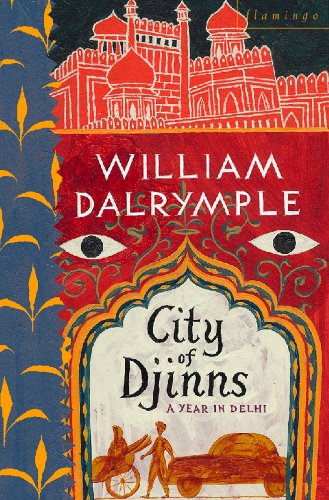William Dalrymple, City of Djinns: A Year in Delhi (1993)
OK, so I can see what all the hype is about. William Dalrymple is a deft storyteller with a fine sense of pacing, an eye for detail, and the depth of research to back it all up.
City of Djinns isn’t his most famous book, but it’s the one most structured as a travelogue about India, so that’s what I read. In it, Dalrymple peels back the layers of Delhi’s history, moving in reverse-chronological order: Partition, the British Raj, the Mughals, and so on, back to the scant remains of the time of the Mahabarata. It’s a clever approach, one that creates a surprising degree of suspense that would have been lacking if we’d gone the other way: the Raj and Partition and modern India are well enough known, but the deeper threads, the long-lost layers, keep us wondering just how far back we can go and what strange wonders we might discover there.
Dalrymple marries this story to a cycle of a year spent in Delhi. His own personal adventures are limited and structured enough that they feel illuminating rather than self-indulgent, and his relationship in particular with his taxi-wallah connects with his various jaunts to historical sites and to meet with various people who represent different aspects of Delhi’s history. Still, one wonders whether Dalrymple’s personal activities really did map so neatly, so that he always ran across the next layer back in Delhi’s history at just the time of year when he’d finished with the last. There are just too many coincidences of this sort — sometimes presented with clunky cliffhanger transitions — which calls the whole framework into question. How much of this really happened? How much happened in the way Dalrymple described it?
For all that, I learned an enormous amount about Delhi from the always entertaining City of Djinns, and I would approach the city differently if I visited it now, having read this book. Some of Dalrymple’s approach, both to historical time and to the spinning of good yarns, seems well worth appropriating for my own work. In particular, I can imagine peeling back the layers of history I want to tell, from my own personal choice to travel to India, to the cultural millieu that made that choice plausible, to the world of spiritualism behind that, and back to the Oriental renaissance.
In City of Djinns, William Dalrymple shows himself to be a fine popular historian and travel writer with a flair for revealing anecdotes and a skillful way with research. These are high achievements for any writer.

